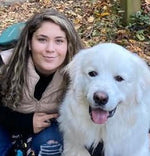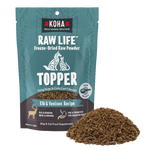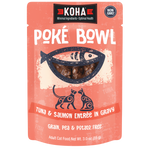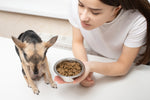 tips
tips
This is Why Your Picky Cat or Dog Won't Eat
Have you ever sought out the perfect food for your pet, done the research, and invested in a high quality product - just for them to turn away at the bowl?
Unfortunately, dogs and cats can be very picky, even when the food you purchase is well balanced. Having a finicky appetite here and there isn't uncommon, but when it happens frequently there may be cause for concern. If your pet constantly refuses to eat, here are a few potential reasons why:
1. Texture
Like humans, dogs and cats can have preferences when it comes to food. Texture can play an important role in whether or not your pet likes a given type of food. While their preference may be as simple as wet food versus dry food, it can also be more specific. Wet food can come in a variety of textures, including loaf/paté, shredded, cuts of meat, and in a broth or gravy.

If your pet doesn’t seem to be digging their dinner, try introducing a new entrée with a different texture to see if that caters to their taste. Make sure to transition gradually to avoid stomach upset, which can lead to even more picky eating. We recommend a transition period of at least eight days to help your dog or cat get accustomed to a new diet.

2. Upset Stomach
Sometimes our pets won’t want to eat for a simple reason: their stomach hurts! Just like it’s difficult for us to eat when we're nauseous, pets can experience the same thing. It can often be difficult to identify an upset stomach, simply because our dog or cat can’t communicate to us. Fortunately, there’s some other symptoms we can look out for to determine if this is the case:
- Fatigue
- Drinking less water
- Lethargy/lack of activity
- Vomiting
- Diarrhea
If your dog or cat is exhibiting any of these signs in addition to not eating, an upset stomach could be the cause. If this is unusual for your pet, it may be a good idea to schedule a trip to their vet just to be safe. Often times, food allergies may be the culprit.
3. Too Many Treats
Does your dog or cat go crazy for a treat? Many pets do! It can be hard to resist spoiling them, especially when they give you the “look”.

Sound familiar? It’s very easy to underestimate the amount of treats your pet is getting everyday, which is where the problem may lie. If your dog or cat is getting too many treats, they’re going to be too full for their meals! Excessive treats also put your pet at risk of being overweight - which can have serious health implications.
Extra weight puts stress on the joints, and increases your pal's risk of conditions such as diabetes and heart disease. Being overweight has also shown to lower the lifespan of a dog or cat. If you’re worried that your pet is overweight and want to find a solution, check out this blog.
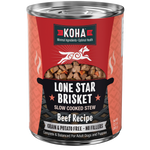
- Regular price
- $47.88
- Sale price
- $47.88
- Regular price
-
- Unit price
- per
Treats should make up no more than 10% of a pet’s daily calorie intake. Pay special attention to the calories per treat for your pet, and when possible, opt for a snack that is lower in calories, minimal ingredient, and high in protein. Keep treats to a minimum until your pet begins to consistently eat their meals again.
4. Follow a Strict Feeding Routine
It’s easy to get in the habit of putting out a bowl of food, and letting your dog or cat get to it whenever they feel hungry. But free feeding can encourage unfavorable habits, including picky eating. When pets learn that food is always available, they’ll pick and choose whenever they feel like taking a bite. This can encourage them to either undereat or overeat.
If you haven’t already, try to establish a consistent feeding schedule for your dog or cat. Most dogs and cats do well eating twice per day. Set your schedule, and put their food out at the same time each day. Don’t let the food sit for more than 15-20 minutes: if they haven’t eaten, simply put it away until their next scheduled meal. Your pet will quickly get accustomed to the routine, and learn that they need to eat when their food is available. Best of all, you’ll have full control of your pet’s diet and know exactly how much they're eating each day.
5. Change it Up!
Picture this: you buy your picky cat or dog a new brand of food, and they LOVE it! They lick the plate clean, and you pat yourself on the back for a job well done. Flash forward a few weeks, however, and all of a sudden it’s back to square one: your pet won’t even look at the food. It’s more common than you think!
The likely reason for this behavior is that your pet is simply sick of the same food all of the time. Think about it: if you had to eat your favorite meal every single day for breakfast, lunch, and dinner, it would get old, pretty fast. It may be time to switch your pet’s plate up if you suspect they may be suffering from mealtime boredom.
Meal toppers for dogs and cats are a great way to make things exciting again! Just sprinkle it on top of their usual food, and watch their food instantly become irresistible. You can also try a different flavor of the same recipe to see if that helps them regain interest.

The bottom line? Don’t be afraid to try new things to make mealtime fun for your dog or cat.
6. Underlying Condition
If you’ve exhausted all of the above options, a trip to the vet may be necessary. Reduced or no appetite can sometimes, in serious cases, be indicative of an underlying problem.
Picky eating should be evaluated by a veterinarian, if accompanied by the following symptoms:
- Your pet begins vomiting and/or having diarrhea
- Your pet has been constipated for two or more days
- If your dog or cat appears to be in physical discomfort or pain
- Your pet has little or no appetite that persists for longer than 2 days
- Your pet is under six months of age, or considered a senior
If you're worried about your furry friend, go ahead and schedule a visit with your trusted animal clinic. They can help get you on the right track, and help your pal get back to thriving!
And if food allergies or upset stomachs continue to be a problem, it might be time to change their diet altogether. KOHA Limited Ingredient Diet entrées for dogs and cats are designed to help the most extreme food sensitivities. Each recipe is 95% Meat with no fillers or unnecessary ingredients.
Table of Contents
- Choosing a selection results in a full page refresh.
- Press the space key then arrow keys to make a selection.
